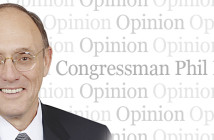By Jeff Keeling
Sitting in Founders Park Friday night, listening to live music, watching the large crowd and surveying the radically changed downtown landscape around me, I thought of the local leaders who helped bring about downtown’s revitalization.
At times, disagreements over less significant details can overshadow a big picture that is nothing but positive. Such is the case with over $1 million worth of lease payments headed the Johnson City Development Authority’s way – the kind of money for downtown enhancement that leaders could only dream about less than a decade ago.
Ten years ago, the JCDA folks would wrestle over trivial amounts of funding and issues like placement of trash cans or color schemes. But they were also in the trenches developing the tax increment financing (TIF) district that along with the city’s stormwater program has helped propel downtown’s resurgence.
In the park Friday, I could look out at one restored train depot and a second nearing completion of its restoration – both with private businesses occupying them and contributing to the tax base. I could survey the park where warehouses once stood, now a beautiful green space dotted with trees and sculptures that is constantly filled with people. Behind me were a rising Farmers Market and event pavilion and the nearly renovated Downtown Centre, which Northeast State Community College students will fill soon and which is the source of the lease payments mentioned above.
A new bicycle store, new apartments, another pending green space – the list of downtown’s current progress is real, and it’s substantial. Washington County Mayor Dan Eldridge gave proof positive last week, saying the property tax growth rate in the TIF district for 2015 was 20 percent, compared to 1 percent countywide. The projection for next year? Growth of 22 percent, meaning the county’s annual contribution to the TIF fund will have risen from about $261,000 in fiscal 2014 to $390,000 in fiscal 2016.
“The TIF is working,” Eldridge said. JCDA borrows against TIF funds for projects that draw in additional private capital, in theory creating a virtuous cycle as the private development further grows the TIF amounts. Eventually, if it works, TIF is no longer needed, the district is no longer blighted, the now much-larger increment returns to local government coffers and development continues.
TIF has helped offset developer costs at the University Edge apartment complex (one of its first uses) and helped fund the Farmers Market project and the Northeast State project, among other things.
Both TIF and the stormwater projects downtown have had their naysayers, but Eldridge’s numbers are inarguable. I encourage anyone to take a close look at downtown today, and to keep returning over the next couple of years as its rapid redevelopment continues.
In the meantime, as their predecessors did over much smaller amounts of revenue, today’s leaders sometimes differ in how to manage the funds that help downtown grow. The JCDA and Washington County aren’t yet in full agreement with the level of county oversight that should be applied to around $270,000 a year in lease payments from Northeast State.
Eldridge says the lease payments are tantamount to TIF funds, and he’s correct. Though Northeast’s rent won’t be subject to the bonding requirement of standard TIF revenues, it has come about as the direct result of a TIF project, and is offsetting TIF expenditures. All TIF projects over $25,000, and that’s pretty much all of them, are subject to County Commission approval (the commission has yet to deny one).
Some JCDA members are concerned about what they see as an unnecessary layer of oversight with these funds, which could be applied more nimbly to opportunities that may need quicker action. They’re fully capable, they say, of making decisions that will enhance downtown and the overall county tax base. They are correct as well.
While the parties involved work toward an amicable solution, as I’m confident they will, I hope they also jointly celebrate downtown’s tremendous progress. They are among the current leaders in a process that began with folks like former JCDA Chairman Craig Torbett, who laid groundwork for the TIF, and Johnson City Public Works Director Phil Pindzola, who has led stormwater management and other crucial infrastructure projects that have enhanced downtown’s aesthetics and lessened its flood problems.
While they may have been saying, in the immortal words of Lennon and McCartney, “Try to see it my way/Do I have to keep on talking till I can’t go on?” I say to the JCDA and commission, “Life is very short, and there’s no time/For fussing and fighting my friend.” It is time for the parties to finish the verse: “We can work it out, we can work it out.”





